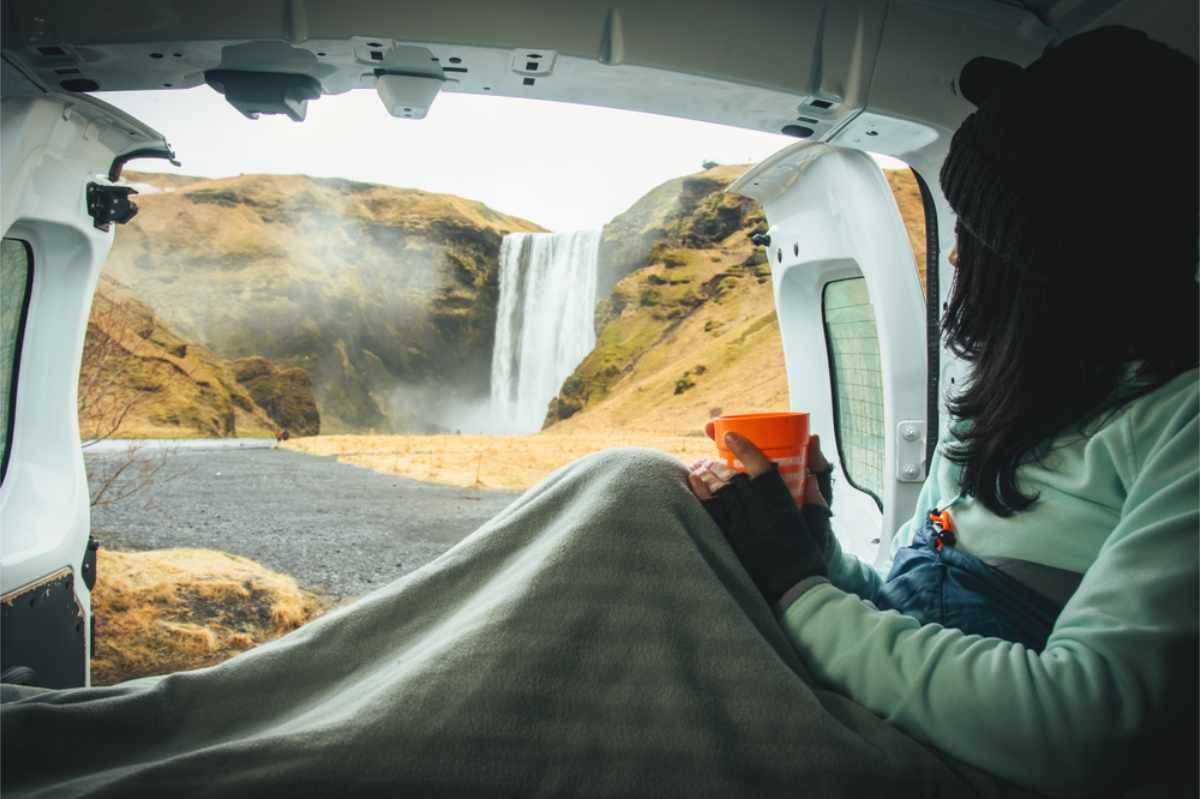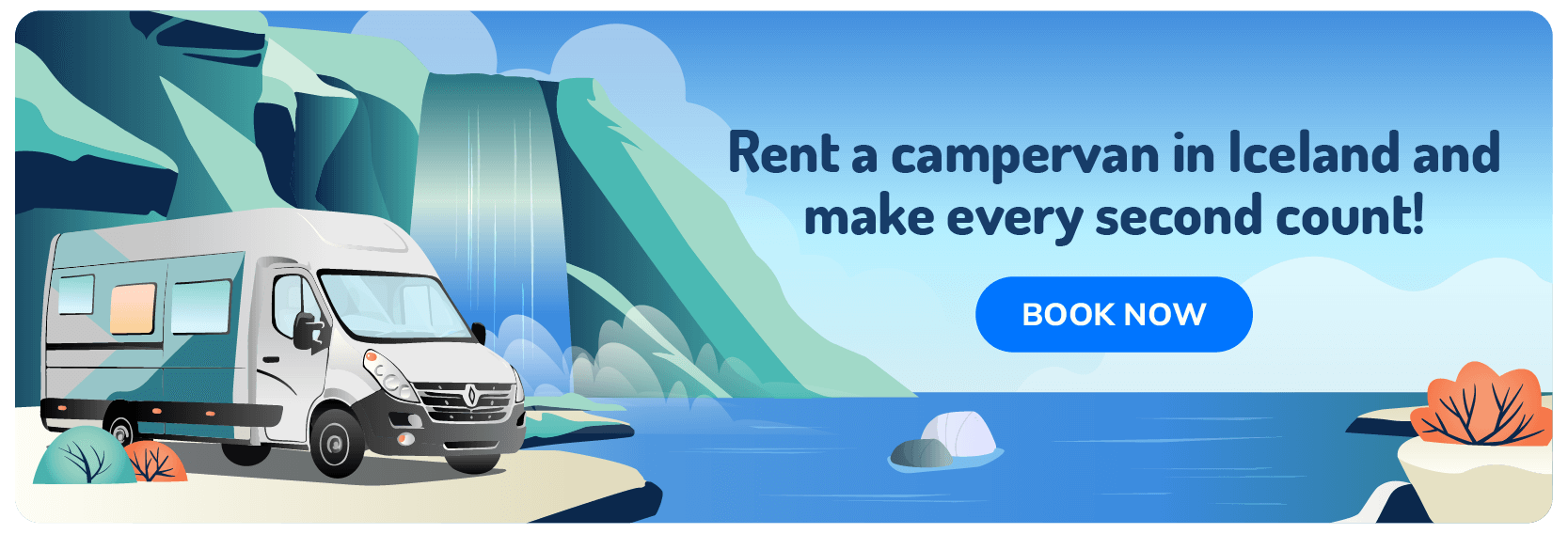A trip to Iceland can be the adventure of a lifetime, no matter how you choose to visit. However, planning an Iceland campervan itinerary can give you the ultimate in flexibility, allowing you to see the country and its sights on your terms. This guide will help you decide what to see and do as you make your way around Iceland.
Why Renting a Campervan Is the Best Way to Explore Iceland
While you have many options for renting a vehicle to travel around Iceland, a campervan can be one of the best options for numerous reasons. Perhaps the biggest reason to choose a campervan is the flexibility you get. Even in the high season, you generally don’t have to reserve campsites ahead of time, giving you more freedom to change your plans.
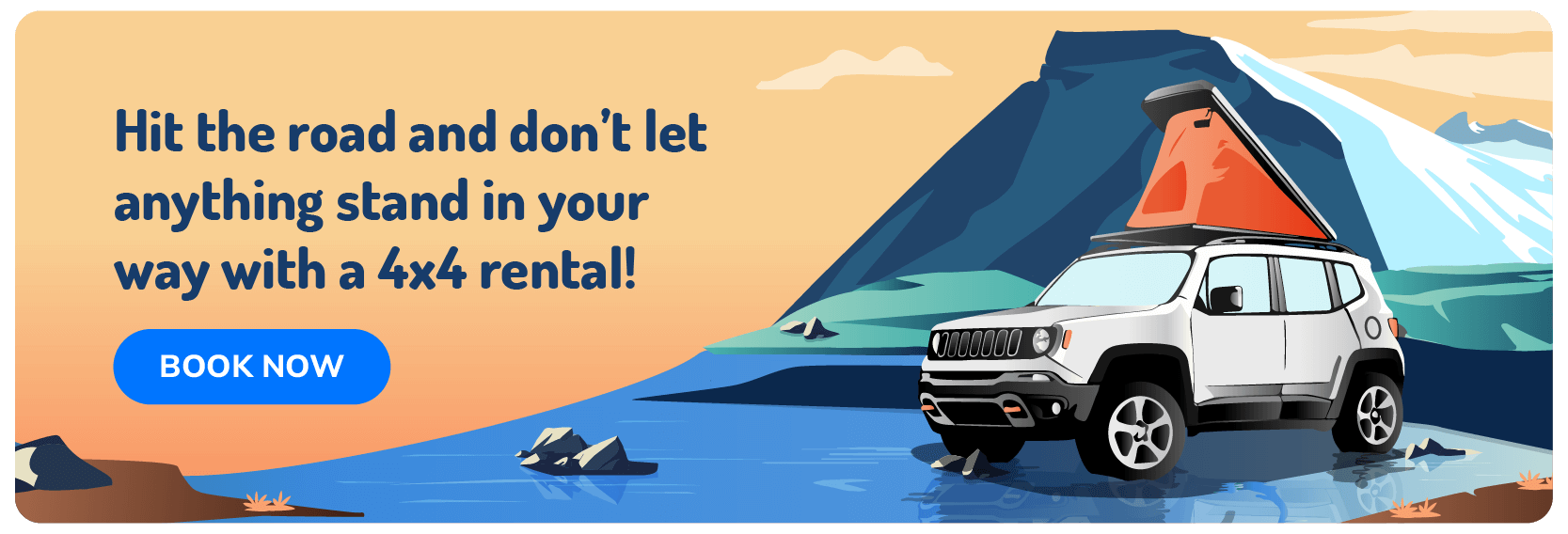
Another great reason to choose a campervan for your Iceland trip is the cost efficiency. When you rent a campervan, you may pay a little more than for a standard vehicle, but you will pay less for your accommodations each night, helping you save money in the long run. Campgrounds in Iceland charge low fees, especially compared to booking hotels.
A campervan also makes it easy to prepare your own meals, saving you even more money since you don’t have to spend money in restaurants multiple times a day. You can stock up on groceries and cook all types of meals on the road. You can also stay out later without worrying about getting back to town in time for restaurants to still be open.
If you rent a 4x4 campervan, you can travel to and stay in more remote locations. No matter which campgrounds you choose, you will wake up to beautiful sights, giving you a more immersive experience than driving a traditional vehicle and staying in hotels.

Choosing the Right Campervan for Your Trip
As you plan your Iceland campervan itinerary, you will find that you have several options, including 4x4 and 2WD. Knowing more about your proposed itinerary will ensure you choose a campervan that ensures you can get everywhere you want to go.
Campervan vs. Motorhome: What’s Best for Your Itinerary?
The first decision you must make is whether you want to rent a campervan or a motorhome. Your party size will play a role in this decision. A motorhome has more room than a campervan, making it better for families. However, a campervan is smaller and more mobile, making it a better choice if your itinerary includes more remote locations.
Another factor to consider is the wind. While high winds can occur year-round in Iceland, they are more prevalent during the winter and shoulder months. During windier times of the year, it’s typically best to have a campervan due to its lower profile. However, both options may require you to stay where you are if there are wind warnings.
Essential Features to Consider
As you look at various campervan or motorhome options, you’ll notice that not every model has the same features. The first feature you will need to consider is whether you need a 4x4 camper. If you are traveling in the winter or intend to drive F-roads to visit locations in the highlands, a 4x4 is an absolute must.
You will also need to consider the fuel efficiency of the campervan you choose. Knowing how much fuel you can expect to use on your trip can help you budget more accurately. Storage is another important feature since you will need to keep everything with you, including any food you purchase to prepare meals.
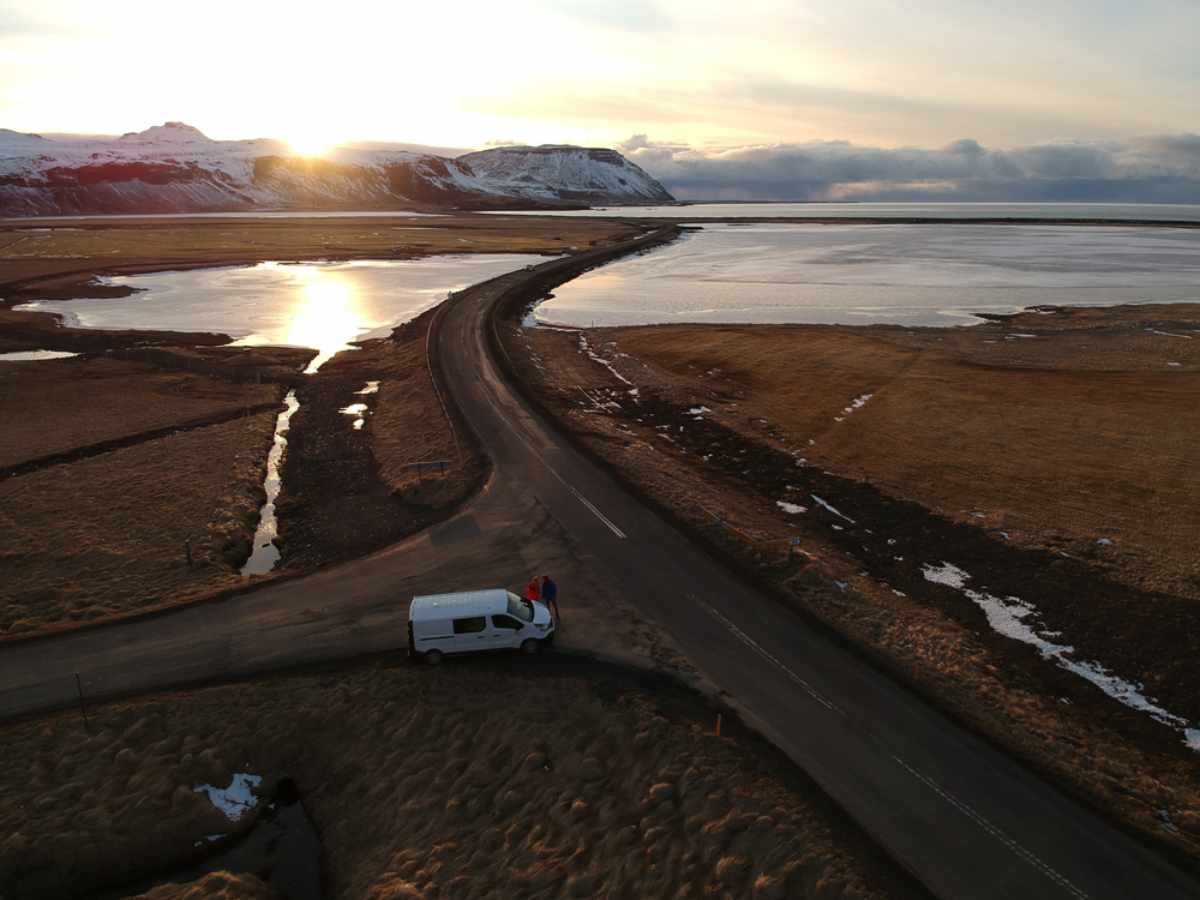
In the winter, you should make sure the campervan or motorhome you choose has heating options. The nights in Iceland can be quite cold year-round, but are even more so in the winter. It’s best to have a heater that doesn’t run on the vehicle’s main battery to prevent draining the battery overnight.
Finally, you may want to get a campervan or motorhome that includes a Wi-Fi box. If your rental doesn’t offer this feature, you can rent one independently. Having a dedicated Wi-Fi box will help you stay connected throughout the Ring Road and is useful when using navigation apps.
Best Campervan Rental Options in Iceland
The best campervan rental for you depends on your planned itinerary and how many people are traveling with you. If you have two or three people, a campervan can be the perfect solution to save money on accommodations and food. In Iceland, some of the most common models include the Renault Trafic, Renault Master, Renault Kangoo, and VW Caddy.
If you are solo or a party of two, a rooftop tent or truck camper can be the perfect solution to give you a little more versatility. These options can often go to locations a traditional campervan can’t go.
When to Travel: Best Seasons for a Campervan Road Trip
In addition to choosing the best campervan, you will need to decide when to visit Iceland. The traditional camping season in Iceland is during the summer, but this doesn’t mean you can’t camp during other times of the year. The following will help you choose the ideal time to go.
Summer: Midnight Sun, Accessibility, and Crowds
The summer is the most popular time to plan an Iceland campervan itinerary for many good reasons. The biggest reason is the increased accessibility. The highland roads are open and there is less risk of bad weather that will close roads for a day or so. However, accessibility isn’t the only reason to choose summer.
During the summer in Iceland, there are nearly 24 hours of daylight. The twilight hours are short, and you can visit sights at any time of day or night with good visibility. Some visitors even alter their schedules to allow them to visit popular sights with little to no crowds. Summer is the most popular time to visit Iceland, which means you may contend with more people, especially during typical daytime hours.
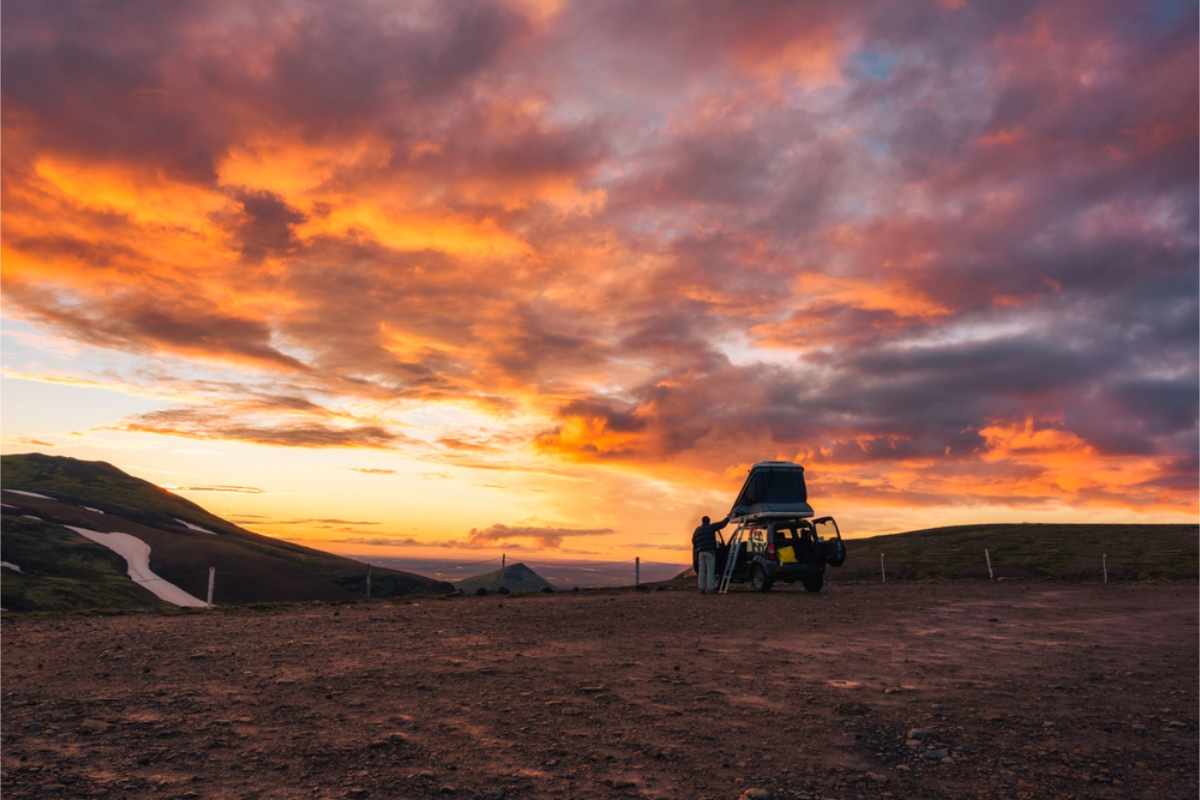
Shoulder Seasons: Fewer Tourists, Changing Landscapes, and Potential Weather Challenges
The shoulder seasons often attract visitors because there are fewer tourists, the costs are generally lower, and the weather can be more agreeable than visiting in the winter. However, it’s important to know that many campgrounds are closed from September 15 through May or even June 1, so you will need to plan your stops carefully.
Another attraction to the shoulder seasons is the changing landscapes. In spring, the newborn lambs and green plants offer a rebirth that can be amazing to witness. Fall features changing colors, despite the low number of trees. However, visiting in these months can still pose some weather challenges. Windstorms and even snow can still occur.
Winter: Northern Lights, Icy Roads, and Safety Considerations
Winter isn’t the first thing that may come to mind when you think of creating an Iceland campervan itinerary, but it is still possible with careful planning and flexibility. The winter months are an ideal time to catch the Northern Lights and enjoy the stunning snowy landscapes.
However, it’s important to note that you will need to plan your campground stops carefully based on which ones are open year-round. You should also have good winter driving experience to handle the icy roads and blowing snow. Always keep an eye on the weather and road conditions before traveling and respect weather warnings. Change your plans as needed.
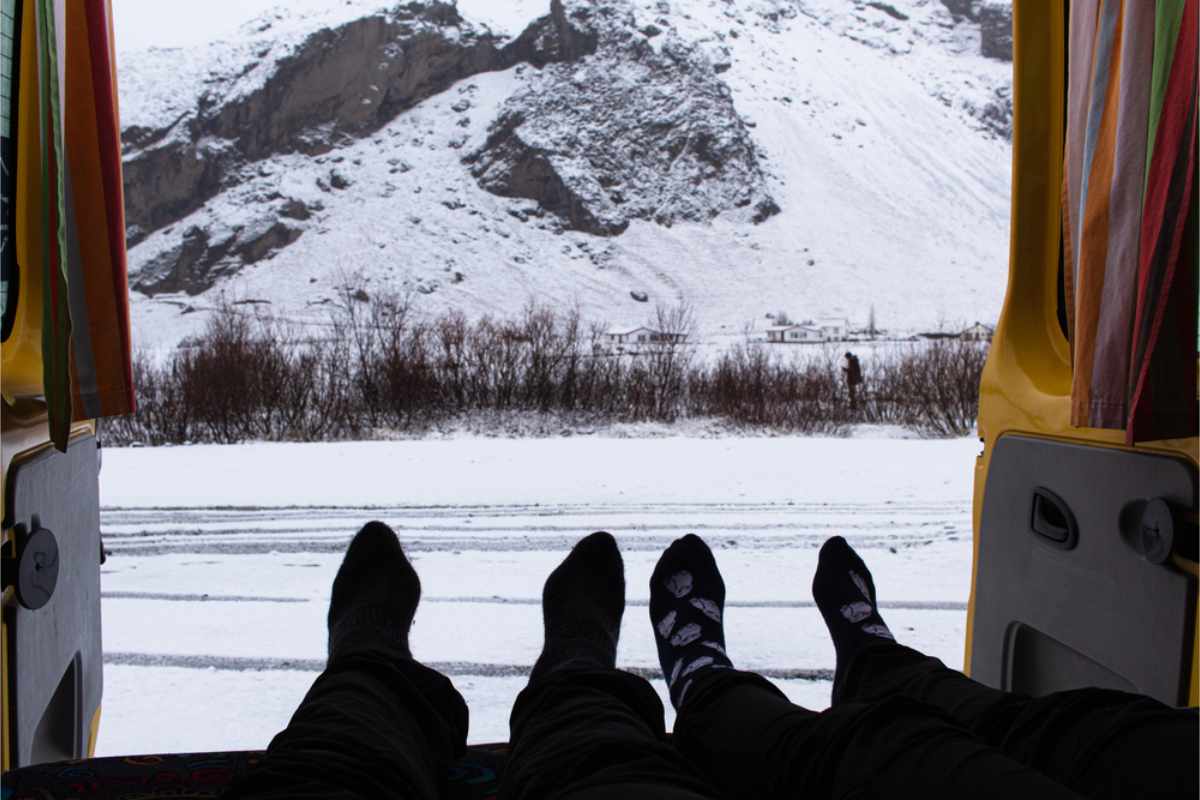
The Perfect Iceland Campervan Itinerary (Day-by-Day Guide)
Once you have your campervan booked, it’s time to start planning your Iceland campervan itinerary. While everyone’s itineraries will look a little different, depending on the amount of time they have and their preferences, the following will help you get started.
Day 1-2: Reykjavik & The Golden Circle
Many visitors choose to spend the start of their trips in Reykjavík, especially if they arrive in the early morning hours. Reykjavík is approximately 45 minutes from the airport and offers a variety of shopping, museums, restaurants, bars, and other attractions to explore. If you arrive later in the day, it’s the perfect place to wind down and get ready for your Ring Road adventure.
On the second day, many visitors start their Ring Road trip with a drive around the Golden Circle. This area features some of the most well-known sights in the country and offers a fantastic starting point to introduce you to everything Iceland offers.
Thingvellir National Park
The first stop on the Golden Circle route is Thingvellir National Park. This World UNESCO Heritage Site is the home to the original Icelandic parliament and features hiking paths, waterfalls, a lake, and the Silfra fissure. Visitors can check out the visitor’s centre, Öxarárfoss, Þingvallavatn, Almannagjá Gorge, and more.
Geysir and Gullfoss
The other two primary stops on the Golden Circle are Geysir and Gullfoss. Geysir is home to the Great Geysir, the geyser that lent its name to all similar features worldwide. However, it is now Strokkur that erupts regularly, with a dazzling showing about every 10 minutes. This area also features various hot springs, mud pots, and other geothermal features.
Gullfoss is an impressive two-tiered waterfall that drops into a breathtaking canyon. There are several viewpoints at Gullfoss, giving you different perspectives of the impressive waterfall. Rainbows can be common at this site, further enhancing the waterfall experience.
Secret Lagoon
When you’re ready to wind down for the day, a stop at the Secret Lagoon can be just what you need. This lagoon is one of the oldest swimming pools in Iceland and gives you a more natural experience than many of the newer tourist lagoons. You can relax in the hot water as you take in the beautiful surroundings before retiring for the night at the campground.

Day 3-4: South Coast Adventures
After the Golden Circle, it’s time to continue along the Ring Road to experience the well-known South Coast. This part of Iceland is one of the most traveled areas, featuring numerous waterfalls, glaciers, mountains, and more. It’s best to spend at least two days covering this area.
Seljalandsfoss & Skógafoss
The two most popular waterfalls in the south are Seljalandsfoss and Skógafoss. Both waterfalls are located right along the Ring Road, giving visitors easy access. For those who have a little more time, both waterfalls have impressive neighboring falls to visit. Skógafoss also features a staircase up to the top of the waterfall, where you can continue down the path to view more waterfalls.
Reynisfjara Black Sand Beach
The next stop on your route is Reynisfjara Black Sand Beach, one of the most well-known beaches in Iceland. The black sand and stunning basalt columns are the attractions, along with the rock formations in the water. However, it’s important to pay close attention to the warning signs and stay well back from the water for safety reasons. Sneaker waves are common and can be deadly.
Vatnajökull National Park & Jökulsárlón Glacier Lagoon
Other notable stops along the South Coast include Vatnajökull National Park and Jökulsárlón Glacier Lagoon. Vatnajökull National Park takes up a significant portion of eastern Iceland, but Skaftafell is a common stop along the southern route. There are hiking trails to waterfalls and glaciers in this part of the national park, along with a campground.
Further down the Ring Road, Jökulsárlón Glacier Lagoon offers a striking contrast between blue ice and black sand. The lagoon is often filled with chunks that have broken off from the glacier. These chunks eventually drift out to sea through the channel, with some of the pieces washing up on the shore of Breiðamerkursandur, often referred to as Diamond Beach.
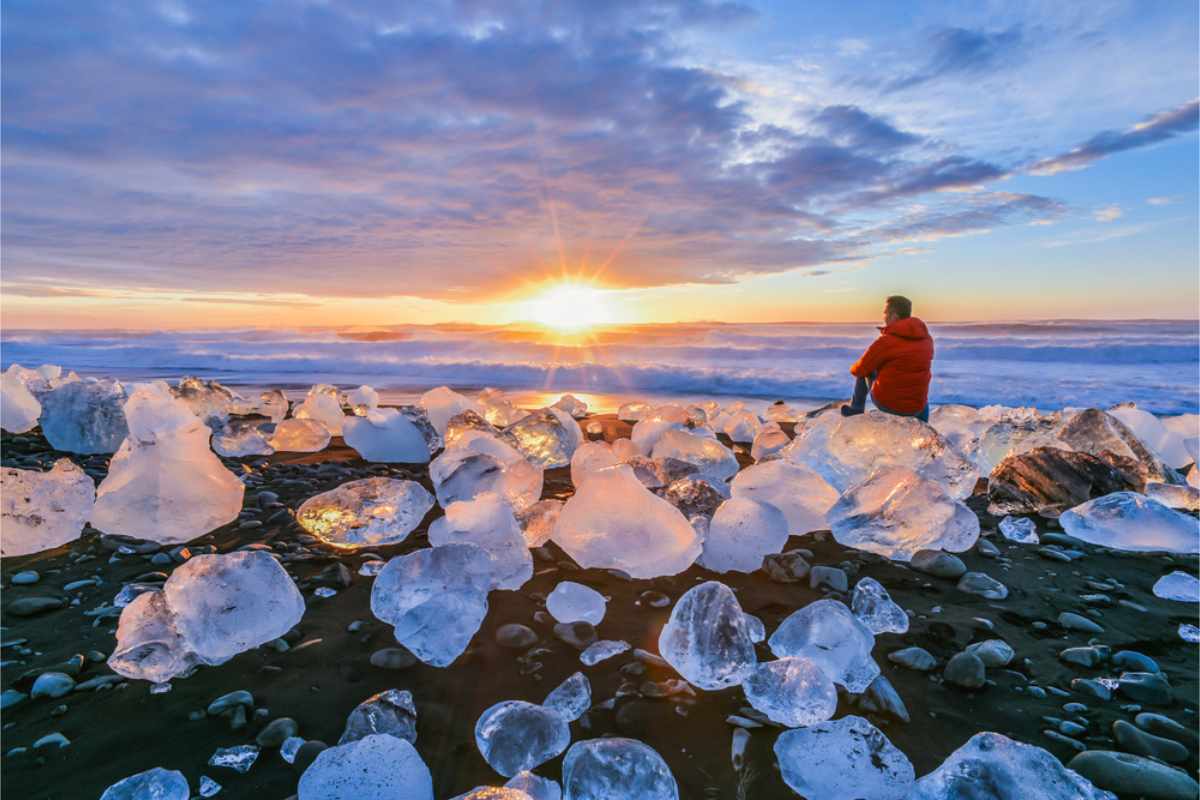
Day 5-6: East Fjords Escape
Many people rush through the East Fjords because they don’t know what there is to see. Many of the sights in this area of the country are lesser known, but staying for a couple of days gives you the opportunity to see a new side of Iceland without the crowds you may expect in other parts of the country.
Djúpivogur & Seyðisfjörður
The small towns on the East Coast of Iceland are well worth the stop. Djúpivogur and Seyðisfjörður are two of the most popular choices. Djúpivogur, a small town in the southeast, is known for Eggin í Gleðivík, a collection of stone bird eggs that are carved to scale, and Auðunn's Stone & Mineral Collection. Búlandstindur, a unique mountain peak, overlooks the town.
Seyðisfjörður is a small town in the northwest of Iceland, characterized by its blue church and the rainbow road leading to it. This is the town where the car ferry from Denmark disembarks. You must drive a mountain road to reach the town, along which you can find some waterfalls.
Day 7-8: North Iceland & Mývatn Region
As you continue your Iceland campervan itinerary, you will enter North Iceland and the Mývatn area. This area is still somewhat remote and offers plenty of unique things to see and do.
Dettifoss & Selfoss Waterfalls
Dettifoss and Selfoss are two of the most popular waterfalls in this region of the country. Both can be accessed by two roads. The eastern road is generally only open in the summer and is a rough, gravel road. A 4x4 is recommended for this route. The western road is paved. While it may also be closed in winter, it is open more often and allows all vehicles to reach these waterfalls.
Dettifoss and Selfoss are not directly along the road. After parking, you will need to hike through the volcanic field to the river. Dettifoss is one of the most powerful waterfalls in Europe and is impressive in size. Further down the path, you will find the U-shaped Selfoss. The view from each side is slightly different, but in the end, it doesn’t matter.
Húsavík Whale Watching
If you’re interested in adding a whale watching excursion to your Iceland campervan itinerary, Húsavík is the perfect location. Known as the Whale Capital of Iceland, you will find several companies offering excursions to see the whales. You can expect to see humpback, minke, and blue whales.
Mývatn Geothermal Baths
As you wind down at the end of your day, the Mývatn Nature Baths is an excellent choice. The lagoon has similar blue water to the Blue Lagoon and offers similar benefits at a fraction of the price. It’s the perfect place for a relaxing dip to break up your drive around the Ring Road.
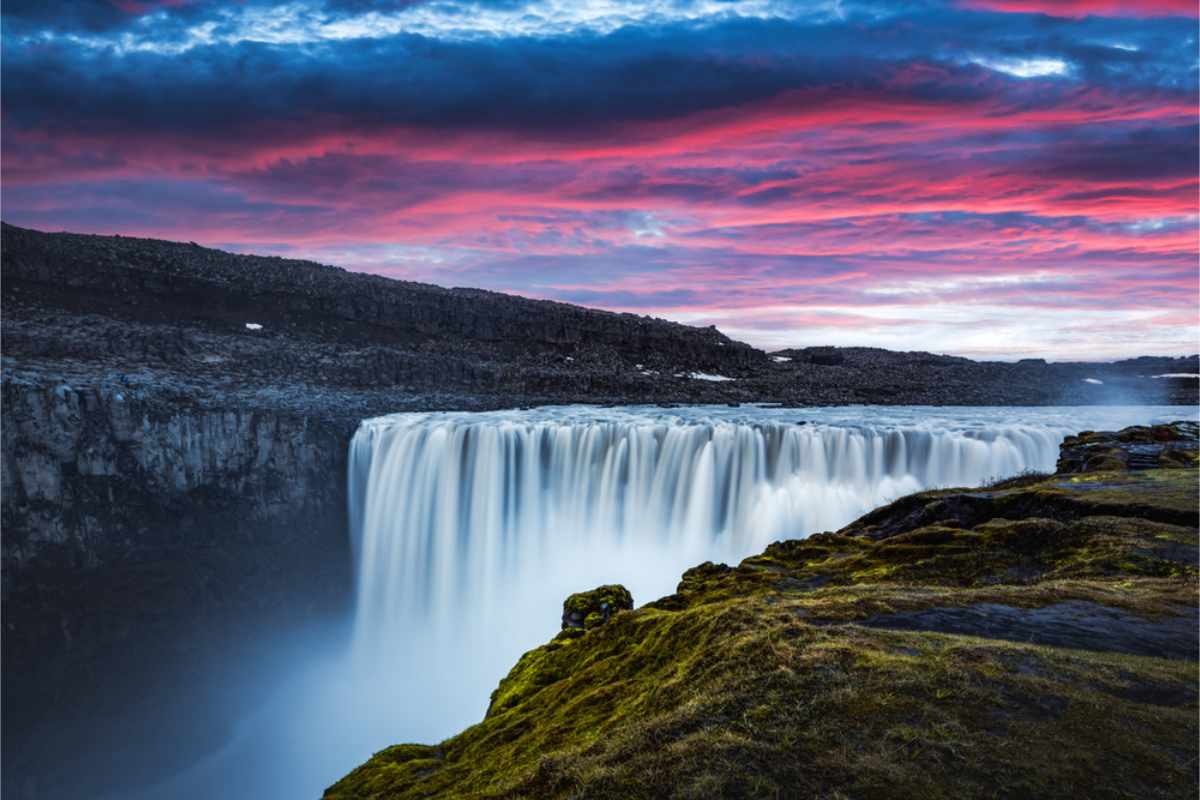
Day 9-10: Westfjords – Iceland’s Hidden Gem
One area that many visitors skip over on their way around the country is the Westfjords. This area is more remote than other areas, and more roads are unpaved. If you choose to visit the Westfjords, you can expect to encounter fewer tourists and a vast array of beautiful natural sites.
Dynjandi Waterfall
Perhaps the crowning jewel of a visit to the Westfjords is Dynjandi waterfall. This magnificent waterfall is often compared to a bride’s veil, cascading down the cliffside toward the fjord. As you hike toward the main waterfall, you will pass numerous smaller waterfalls, each just as beautiful as the one before.
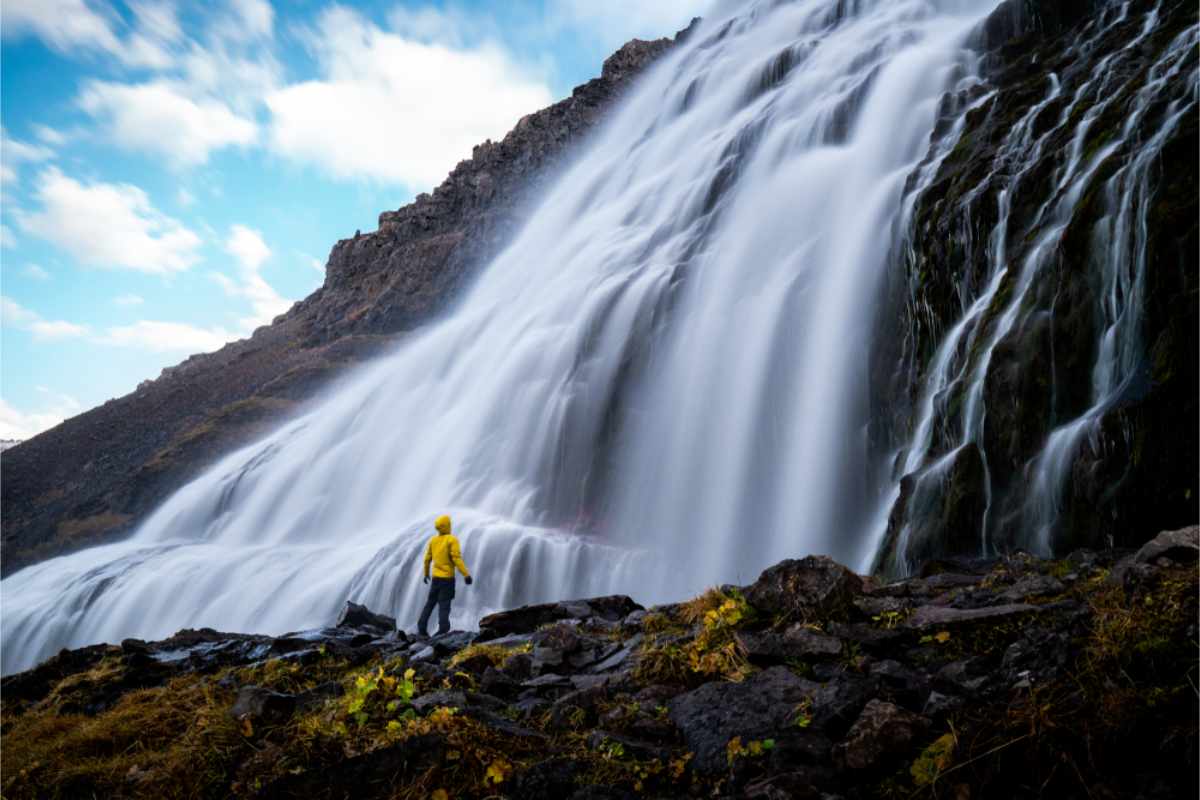
Rauðasandur Beach
Another primary point of interest in the Westfjords is Rauðasandur Beach, one of the few beaches that doesn’t have black sand. The reddish, golden sand of Rauðasandur stands out against the blue water of the ocean. The road leading down to the beach is a winding gravel road that snakes down, giving you fantastic views of the beach as you drive toward it.
Drangsnes Hot Pots
As you make your way around the Westfjords, Drangsnes Hot Pots offers one of the best places to relax for a much lower cost than many of the other lagoons. In fact, the hot pots can be used for a donation of any amount you wish. The hot pots are positioned on the beach, giving you a beautiful view of the surrounding mountains.
Day 11-12: Snæfellsnes Peninsula & Return to Reykjavik
Before returning to Reykjavík and the airport in Keflavík, Snæfellsnes gives you one last look at Iceland. This area of Iceland is sometimes called a miniature Iceland because it contains a little bit of everything you can find in the country. It’s the perfect way to end your journey.
Kirkjufell & Kirkjufellsfoss
Beyond the South Coast, one of the most recognizable areas of the Snæfellsnes Peninsula is Kirkjufell and Kirkjufellsfoss. The arrow-shaped mountain was featured in Game of Thrones and is one of the most photographed locations in Iceland. From the right angle, you can capture both the waterfall and the mountain in one shot.
Vatnshellir Cave
Vatnshellir Cave was the inspiration for Jules Verne’s Journey into the Center of the Earth. A tour of this lava cave takes you under the surface, down a spiral staircase, to view the formations left behind by ancient lava flows. The lit pathways showcase the beautiful colors created as lava hardens.
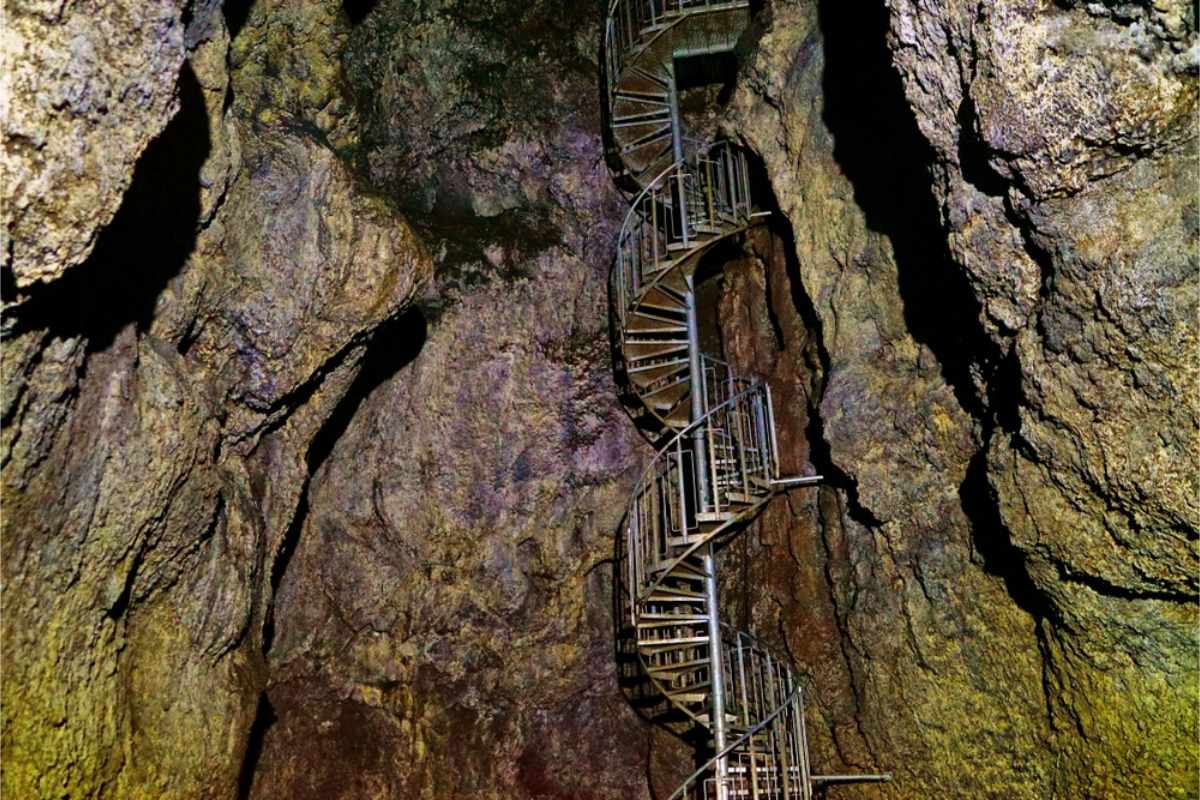
Stykkishólmur & Ferry to Westfjords
The easiest way to make your way to the Snæfellsnes peninsula from the Westfjords is via the ferry. The ferry drops you off in Stykkishólmur where you can continue your journey. This small town features delicious fresh seafood at several restaurants. You can also climb the hill near the harbor for an overview of the entire town and the surrounding mountains.
Where to Camp: Best Campsites & Wild Camping Rules
In addition to planning your Iceland campervan itinerary, you will need to find places to camp. Many of the campgrounds in Iceland don’t require reservations. You will simply park in a large field where you can find space. Understanding the camping rules and finding the best campsites will ensure you have the best experience.
Overview of Designated Campsites
Most of the campgrounds in Iceland offer beautiful views, so you can’t go wrong. However, you will need to stay in designated campsites throughout your visit. The Tjalda website is your best resource to find designated campsites where you will be each night. You can sort campsites by location, features, and when they are open.
Tips for Wild Camping Legally
Wild camping was once allowed in Iceland, but when tourism numbers increased, the country changed the laws. Today, when you are in a camping vehicle and aren’t sleeping in a tent, wild camping isn’t generally allowed. The only exception is if you receive permission from the landowner.
For the most part, you will need to locate a nearby campground to spend the night in your campervan. If you do receive permission to stay on private property, it’s essential to follow the “leave no trace” rules. Pack all your waste with you and avoid disturbing vegetation, especially the moss.
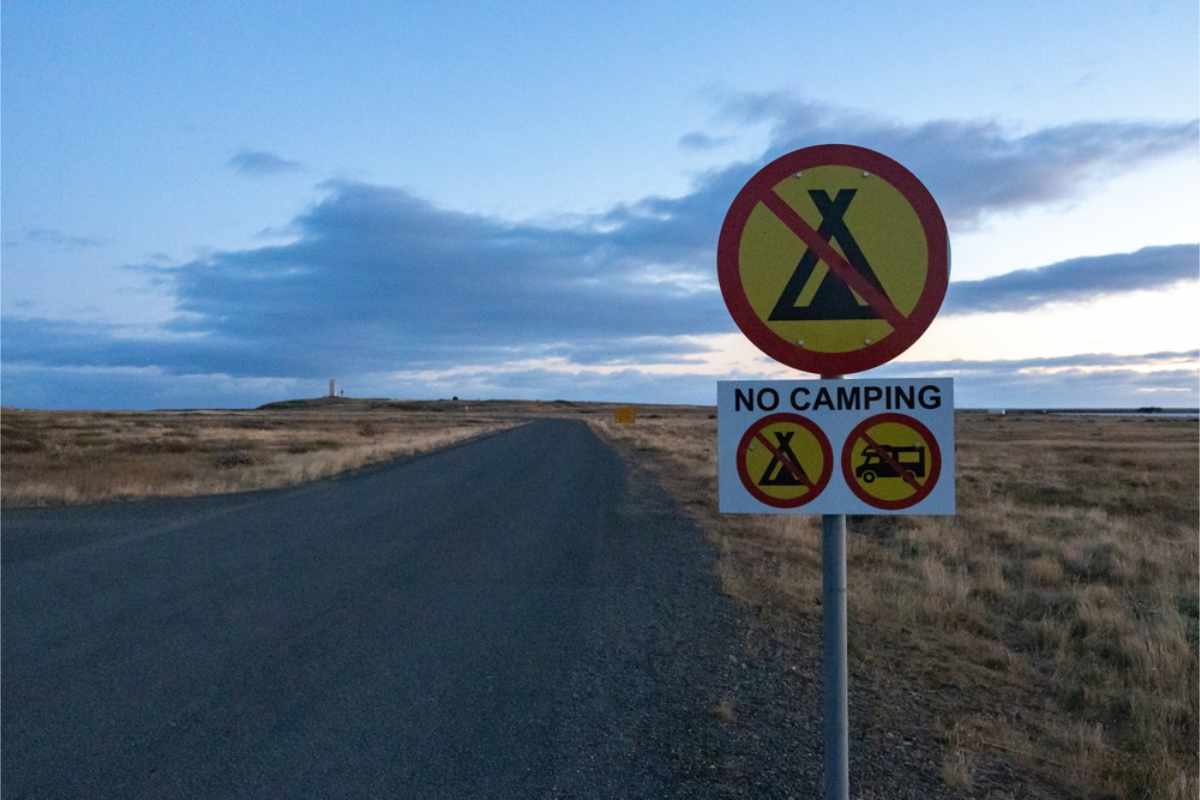
Facilities to Look For
First and foremost, look for campgrounds that have on-site showers. However, if a campground doesn’t have showers, you can often go to local pools to get a shower for a low price. Electrical hookups and Wi-Fi are also great to have when camping in Iceland.
If you want to prepare meals for yourself during your camping trip, finding campgrounds with a kitchen will give you access to more tools than you have in your campervan. Some campgrounds also have laundry facilities. Although you don’t need laundry at every campground, it can be helpful to stop at a few around the Ring Road.
Essential Packing List for a Campervan Trip
Packing for a camping trip in Iceland is a little different than packing for a trip where you will stay in hotels. The following will help you get started on your packing list, so you don’t forget a thing.
Must-Have Gear for Comfort and Convenience
In addition to packing plenty of layers, including warm clothes and waterproof, windproof outer layers, you should pack a few things to make your campervan more comfortable. A mattress topper and warm sleeping bag or blanket will help keep you warm and comfortable. If you’re traveling in the summer, an eye mask can help you sleep during the long hours of daylight.
There are some other items you should consider for your comfort and convenience. Packing your own toilet paper will ensure you have something when you need it. Other convenience items include a power bank to keep electronics charged, a quick-dry towel, trash bags, and a first aid kit.
Cold-Weather Essentials
Even the summer nights in Iceland can be cold. While campervans typically include bedding, you may want a sleeping bag or some extra blankets. You will also need warm clothing. In summer, you may not need a winter jacket, but you should have a fleece or another sweater to wear over your thinner layers.
As you pack for your Iceland camping itinerary, don’t forget wool socks and wool base layers. No matter the time of year, it’s best to bring a winter hat and gloves, along with a neck gaiter to guard against cold winds.
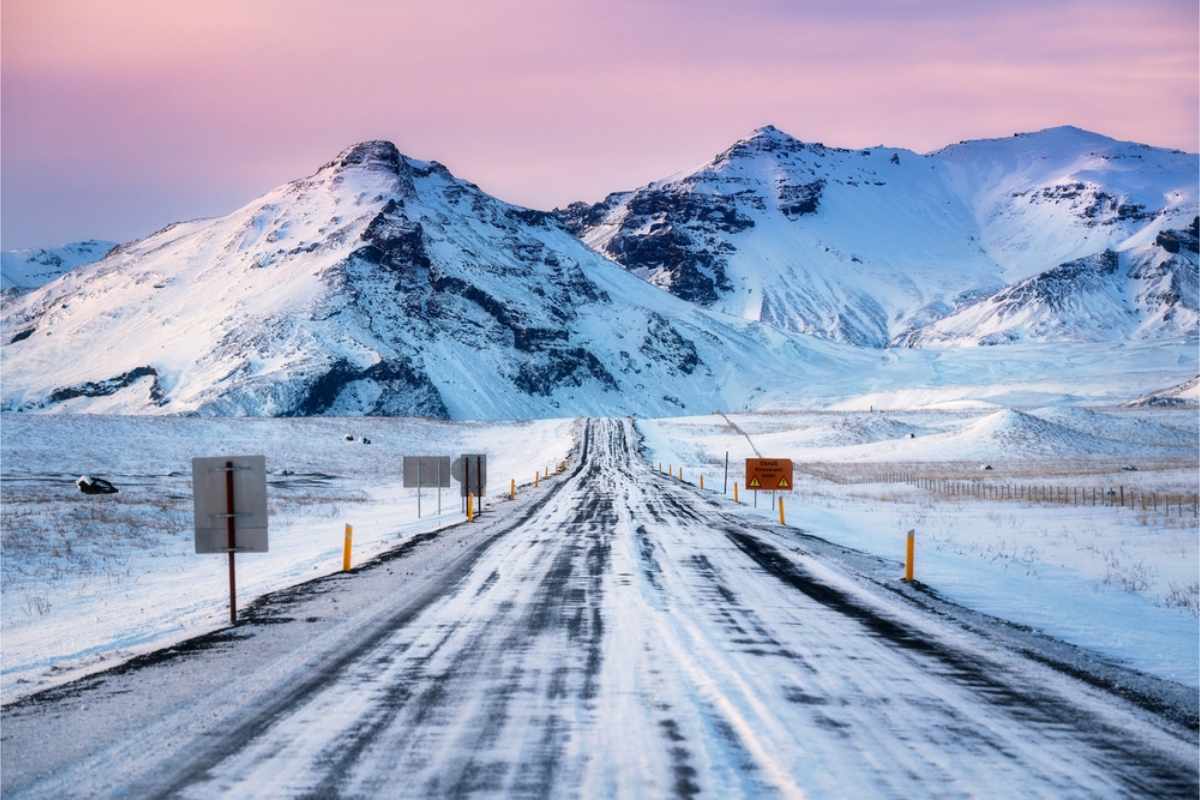
Cooking and Meal-Prep Tips
Your campervan should have many of the cooking essentials you need, but bringing a camping stove can be useful. Trash bags and reusable storage containers can help you keep your campervan neat and tidy.
When you’re ready to stock up at the grocery store, meal planning is essential. Focus on simple meals that don’t require a lot of ingredients. One-pot meals are perfect for camping to minimize time and dirty dishes. Keep your meal plan flexible. Adverse weather conditions can sometimes impact what you intend to prepare, especially if you plan to cook outside.
Driving in Iceland: What You Need to Know
As you plan your Iceland campervan itinerary, you will need to familiarize yourself with driving in the country. While many of the traffic laws are similar to what you’re used to, there are some differences you should consider.
Road Conditions and F-Roads
Perhaps the most important aspect of driving in Iceland is being aware of the road conditions and road types. Always check road conditions before heading out, no matter the time of year.
The F-roads are only open in the summer, but you will also need to be sure you rent a 4x4 campervan capable of driving on them. Not all campervans allow you to drive on these gravel roads. If you don’t have the appropriate vehicle, be sure to double-check your route to ensure it doesn’t include F-roads.
Gas Stations and Fuel Costs
Gas stations are located all around the Ring Road, though there are some areas where they are further apart. The most common fuel station brands are N1, Orkan, ÓB, and Atlantsolía. Fuel prices in Iceland can be higher than visitors are used to, but you can find the lowest prices by tracking fuel prices in real time.
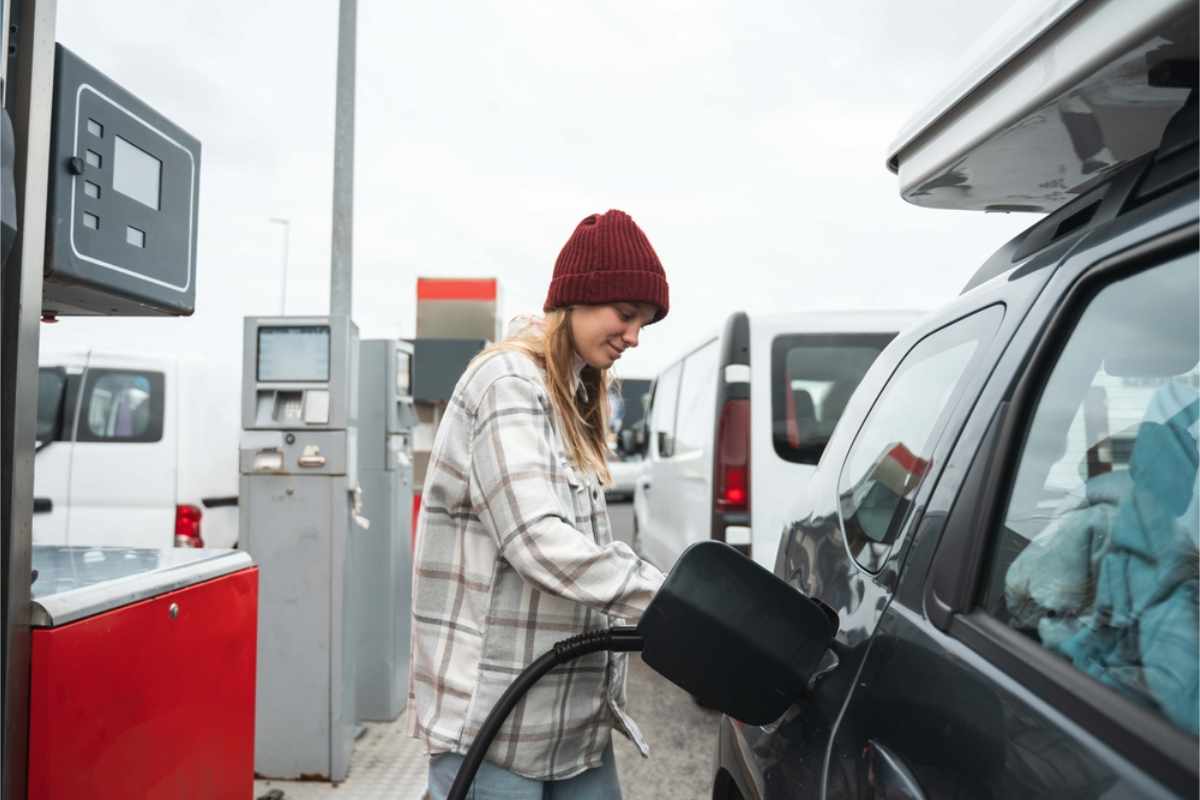
Navigation Tools and Weather Monitoring
As you plan your Iceland campervan itinerary, you can use one of several navigation tools. Many visitors use Google Maps or Apple Maps, but use caution to ensure you have the correct route and it doesn’t take you somewhere you shouldn’t go. Checking the weather conditions is also crucial to protect you from driving in bad weather. Be sure to check often.
Budgeting for Your Campervan Adventure
Many people choose a campervan to traverse Iceland in order to reduce costs. If you are planning to camp around Iceland, the following tips will help you create a budget for your trip.
How Much to Budget for Fuel, Campsites, and Food
Most campervans get about 8-10 L per 100 km. With the price of fuel, you can expect to pay about 26,000-39,000 ISK ($200-300) for a Ring Road trip. Taking detours off the Ring Road will increase your costs. For campsites, you should budget about 1500-2500 ISK per person and 2000-3500 ISK for amenities like showers, electricity, and laundry.
Your food budget will vary more significantly, depending on how you choose to eat. If you choose to cook for yourself, you should calculate about 2000-3000 ISK per person per day. Restaurant meals average about 3000-5000 ISK per person.
Saving Money on Groceries and Cooking in Your Campervan
Preparing your own meals in your campervan is one of the best ways to save money on your Iceland trip. Before you stop at the grocery store, however, you should create a meal plan so you don’t buy more than you need. Grocery prices in Iceland can be comparable to other parts of the world, making it easier to factor in the cost of groceries over eating out.

Hidden Costs to Watch Out For
First, you need to be aware of the extra costs that may come with renting a campervan. Insurance upgrades are essential for driving in Iceland, especially in the winter. Read your contract carefully so you understand costs like returning the vehicle with fuel that isn’t full, not cleaning the vehicle, and extra fees for missed parking or toll fees.
When staying in campgrounds, you may also experience extra costs beyond the basic camping fees. Some campgrounds charge extra for using their shower facilities. You may also need to pay for laundry machines and electrical hook-ups.
Fines are another concern when traveling by campervan or any vehicle in Iceland. Speeding tickets are quite high, as are fines for driving off-road. Finally, if you fail to pay any parking or toll fees during your journey, your rental company will charge you for them, along with service fees.
Final Tips for an Unforgettable Campervan Trip
As you plan your Iceland campervan itinerary, these final tips will ensure you have an unforgettable camping trip. Iceland is a great place to enjoy nature, and camping can help you feel closer to it all.
Best Apps and Resources for Campervan Travelers
In addition to tracking weather and road conditions and using Google Maps, Maps.me, or Waze for your navigation, there are other apps and resources you can rely on during your trip. SafeTravel.is is an excellent resource for staying safe on the road, particularly when there are safety warnings. It can also be helpful to download the 112 app in case of an emergency.
Other helpful apps and resources include the following:
- Parka and EasyPark to pay for parking
- Google Translate to translate information
- XE or Revolut for money conversions
- AllTrails for finding and navigating hikes
- Tjalda.is for finding campgrounds
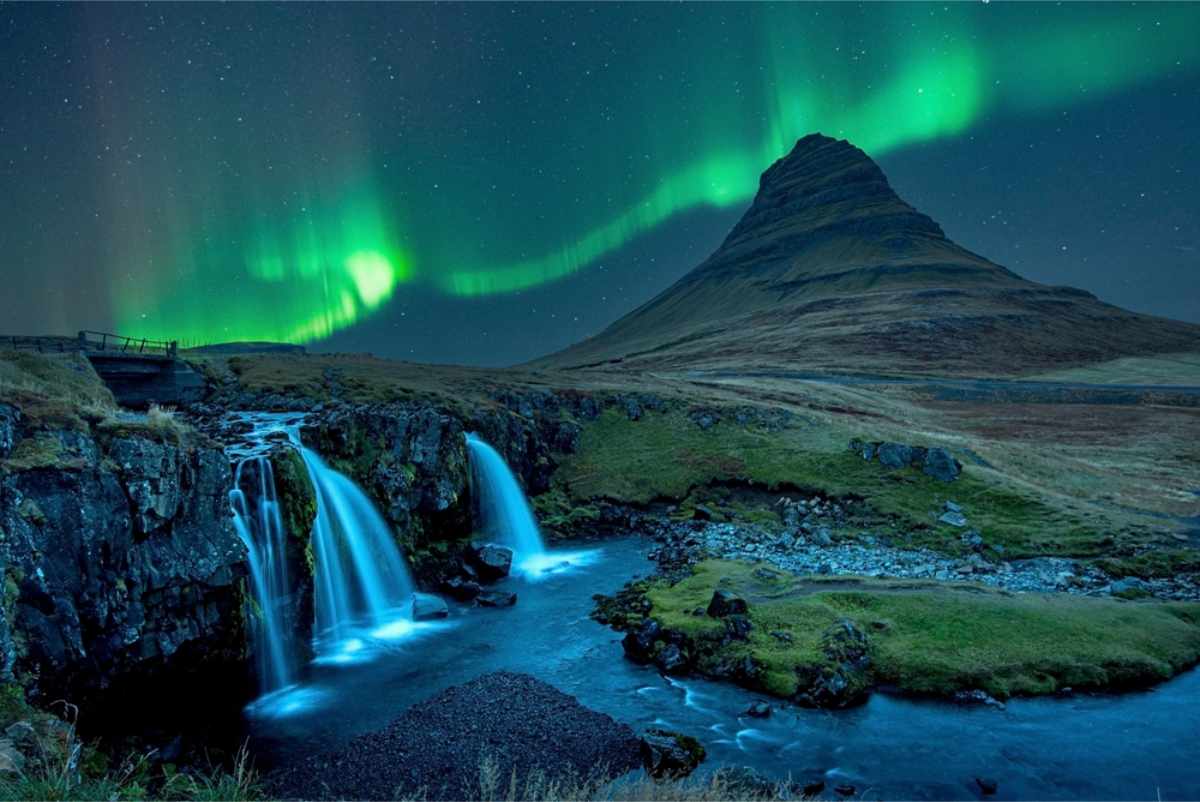
Staying Safe in Iceland’s Unpredictable Weather
As mentioned previously, checking the weather and road conditions, along with SafeTravel,is, is essential to keeping you safe on Iceland’s roads. In addition to ice and snow, the wind in Iceland can be quite strong, blowing vehicles off the road, especially higher-sided vehicles like campervans. Remember, always respect weather warnings and change your plans accordingly.
If you intend to drive F-roads or hike in more remote locations, you should register your travel plan with SafeTravel.is. If you don’t check in at the designated time, they will know where to look for you.
How to Make the Most of Your Time on the Road
Visiting Iceland requires a plan, but you also need to be flexible about your Iceland campervan itinerary to accommodate for weather changes. When creating your plan, focus on each region individually before moving on to the next one. Keep your eyes open for unexpected stops. These stops will enrich your journey.
Don’t overplan your trip. Try to keep driving distances to no more than about four to five hours a day, and don’t rush from place to place. Keep an open mind, and consider starting early or staying out late to avoid the crowds.
Plan Your Ideal Camping Trip in Iceland
When you rent a campervan in Iceland, you get more flexibility in your plans, allowing you to enjoy the country the way you prefer. As you plan your Iceland campervan itinerary, it’s not uncommon to feel overwhelmed. With this guide and a little research, you can create the perfect plan for your unforgettable Icelandic journey.
